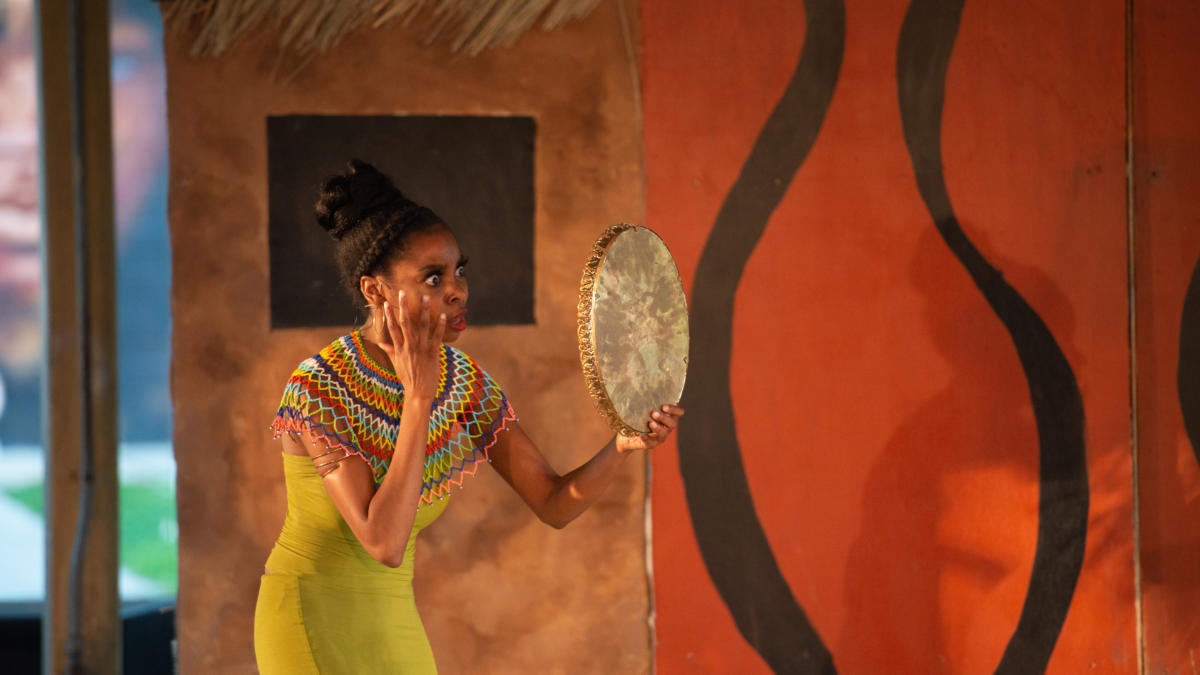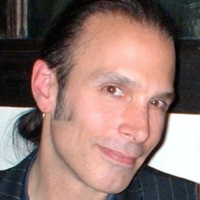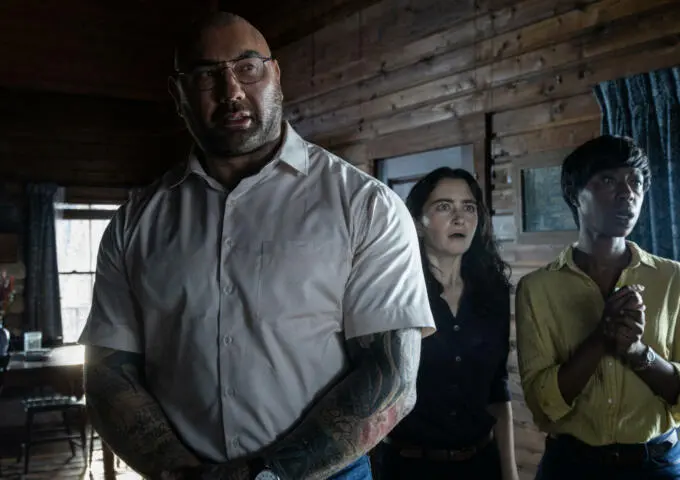“This budget pares city services down to the most essential, imposes layoffs on hundreds of workers, and reduces or eliminates some programs that are simply no longer affordable. This is not what I want for our residents – and I understand if this leaves many of you angry. Frankly, I’m angry too. But after that anger fades, we must remember exactly what we are dealing with. What we have is both a pandemic and an economic catastrophe…. We will keep all Philadelphians safe, healthy and educated while maintaining core municipal services that our residents rely on daily.”
– Mayor Jim Kenney, May 1, 2020
Does the mayor know a “core” truly is what this city relies on daily – along with health, education, welfare, safety/protection and, now, thankfully, a sense of social equity and justice – and includes art, film, theater and music? Be it artists, audiences, those working in and around those aesthetic skill sets such as technicians and stage crews, to say nothing of the arts-adjacent businesses such as hotels and restaurants that benefit from the arts to the tune of $3.4 billion?
The arts in Philadelphia generate over $900 million in household income, $157 million in tax revenue, and sustain 37,000 jobs, annually. For every one dollar invested in bringing or making films – whether Hollywood-based or local – in Philadelphia and the surrounding areas, $630-plus comes back. That’s an amazing return on investment, one you can’t get from Newmont Corp. (NEM) or Advanced Micro Devices Inc. (AMD), this week’s top stocks.
And yet, in response to a $649 million budget shortfall, the Kenney Administration released a revised budget proposal for fiscal year 2021 in which the Office of Arts, Culture, and the Creative Economy (OACCE) and its staff – responsible for overseeing Philly’s $4.1 billion cultural sector – were completely dissolved as of June 1. The same proposal that shuttered the OACCE also “zeroes out” funding for the Philadelphia Cultural Fund, an independent, nonprofit overseen by the OACCE (until June 1), providing millions of dollars in grants to local artists and organizations.
And while the Philadelphia Cultural Fund is currently fighting to see how much – if any – of its current $3.14 million budget going out to 349 arts organizations across the city can be saved before City Council’s June 25 last budget meeting (and what city organization will house the Cultural Fund), one of the largest grants that funds the Greater Philadelphia Film Office (GPFO) coming from the Office of the City Representative is in danger of being closed out as the City Rep’s Office may too be eliminated.

Along with money for smaller independent arts outfits (theater and dance companies, for example), larger, name-above-the-fold institutions such as the African American Museum, the Philadelphia Orchestra and the Philadelphia Museum of Art will lose significant chunks of funding. The African-American Museum alone will lose $231,000 in this potential budget trim.
No one doubts the serious impact that COVID-19 and the riotous ruin of commercial corridors across the city will have on Philly’s pocketbook, but robbing from the arts and film – two of its most durable, and increasingly profitable moneymakers – is like cutting off a very big nose to spite a very small face.
Lights, camera, action is needed
Sharon Pinkenson – the doyenne of the Greater Philadelphia Film Office since 1985 – heard about Mayor Kenney’s proposed budget cuts on the same day, in the same way, most of Philly did: the news.
“His announcement didn’t single out the GPFO, but did mention eliminating offices key to our operations, such as Shelia Hess’ Office of the City Representative – a shock because our meager grant is derived from the City Representative,” said Pinkenson of the “$130,000 and change” grant amidst its $741,000 annual budget. “The Office of Special Events is also proposed for elimination. They are our partners at the city in so much of this as they help coordinate so much of what we do. In addition to attracting productions and working with studios, we coordinate the day-to-day city department needs.” That means police officers for a day’s services, PECO electricians for power outages, and the like. “We do everything,” said Pinkenson, “in service to the city.”
This is not the first time Pinkenson has gone up against the powers-that-be despite being this city and state’s biggest cheerleader and advocate when it comes to location shoots for film, television, music videos, industrials and commercials since the days of Mayor Rendell. Philly used to contribute as much as $239,000 (in 2014), to the GPFO.
“During this administration, the GPFO’s money has been eliminated, and City Council was able to get it back. Four years ago, the significant grant that we had received from the Commonwealth of Pennsylvania – a minimum of $100,000 – was eliminated.” With that, the GPFO receives one-fifth, or 20 percent, of its yearly budget through that remaining City grant. (Additional monies come from fundraisers which, in a time of C-19 looks grim.) How much more could be cut from the GPFO budget before Pinkenson’s local outfit would cease to compete against cities such as New York City and Atlanta, whose film offices are formidable partners and production overseers with their filmmakers? Especially when you consider that Pinkenson is working against our state’s tax credit cap ($60 million) and in competition with cities such as Atlanta, where tax credits are uncapped.
In 2019, the Department of Community and Economic Development stated that since 2004, when the Pennsylvania tax credit program commenced, $812 million in film production tax credits were approved for 500-plus projects, generating $3 billion in direct spending, Why wouldn’t Philly continue to want to attract film crews to our city when its return on investment to the city is $638 per dollar invested? “Actors, hoteliers, crew members, restaurants – all are busy when we bring films and filmmakers to town,” said Pinkenson.
Look at “Dispatches from Elsewhere,” the 2020 AMC series that was a postcard-love letter to our city – can you imagine the tourist dollars generated by such a picturesque look at Philly? Favored local filmmaker since the days of “the Sixth Sense,” M. Night Shyamalan’s Apple TV+ series “Servant” is set for a second season to be filmed here, and HBO’s “Mare of Easttown,” starring Kate Winslet, has reams of filming left to finish in Philly – both when C-19 production limits are lifted, sooner than later (perhaps even sooner than NYC, so now, more than ever, Philly needs to compete to get time-is-wasting production monies to this city). Word has it that, come this fall, Jeremiah Zagar (son of Magic Gardens auteur Isaiah Zagar), is set to direct “Hustle” for Netflix – a basketball dramedy with Adam Sandler and co-producer LeBron James – for an extended Philly film shoot.
Considering the GPFO’s campaign to prove its worth annually to the city – 400-plus productions, 1,500-plus local jobs, $368 million spent – wrapped in a hashtag of #SavePhillyFilm – Pinkenson is looking for support in the many locals who work with her, as well as the City Council representatives who believe in the power of a cinematic buck.
Ashton Segree, founder of the recently-opened SoundSight Productions – a black-owned business, located in Germantown – comes from Pittsburgh, the other Pennsylvania city that rivals Philly for state tax credit dollars. Along with filming a wealth of commercials, shorts and advocating for the GPFO since January 2020, Segree and his four-person team have created and pushed a #NoCap hashtag and petition to end the state’s tax cap.

“We’re growing our business, our business means voices and means a home to filmmakers everywhere,” said Segree. “The larger we grow, bring film after film here, create infrastructure, stay vocal about allowing that infrastructure to thrive in Philadelphia and Pennsylvania, local government won’t be able to ignore us … (without a cap), we would become an Atlanta, you’d then have productions coming all the time. Every year Philadelphia turns away productions – a huge loss in opportunity. Many productions need Philadelphia in their movie. You’d rather them come here and spend their money here providing us jobs instead of going to Atlanta to shoot in a soundstage on a set that looks like Broad Street.”
The veteran Philly casting agents of Heery Loftus Casting (Diane Heery, 37 years; Jason Loftus, 17 years) talk up everything from the number of extras used in Philly-filmed projects such as “Creed” (10,000 extras) and “Dispatches from Elsewhere” (3-to-400 principals with speaking parts, which means the gift that keeps giving – residuals) to the 100-plus locals for HBO’s “Mare of Eastown,” – all of which they could not have done without the GPFO.
“The main thing that Sharon and the film office does is make sure that locals get and stay employed – not just for big Hollywood productions, but smaller, locally made films and commercials,” said Loftus. “That’s taxable revenue – why would the city want to lose this?
Heery stated that this sort-of bloodletting at the GPFO is something that the city makes Pinkenson go through every few years. “You know, to prove her worth,” she said. “But Sharon has the statistics to back up that worth, and more.”
Heery and Loftus are lobbying for the GPFO because Pinkenson and her small staff are the first, and often the only, point of entry between filmmakers and the city.
“Without a credible film office, the optics are bad to the powers-that-be,” said Heery.
“Filmmakers might think that the city is not invested in filmmaking, invested in itself without such an office, as not only does GPFO attract business and steer productions through getting permits and being a liaison to the communities filmmakers must deal with – they are advocacy at its finest in every way,” said Loftus.
“You want someone who has your best interests at hand – not self-interests, no agenda – someone like her who is affiliated with the city, who follows all the initiatives that City Council puts forth, and understands the law and the licensing,” said Heery. “You don’t need some self-appointed expert. You need someone with authority and real information, an official voice under the jurisdiction of the city so that they will be held accountable. Sharon keeps us from being the wild wild west.”
Know who else is not interested in this city becoming the wild wild west when it comes to the greater Philadelphia Film Office? Councilmember Katherine Gilmore Richardson – the youngest woman and the youngest African-American woman elected to an at-large seat in City Council.
“Let me close this window, there’s a protest outside,” said Gilmore Richardson from her office at City Hall during one of Philly’s daily Black Lives Matter gatherings.
Gilmore Richardson is all about “the need to focus the city’s energy and resources on the 40 percent of individuals living in Philadelphia of African-American descent so that we can pare down all levels of systematic oppression, racial inequality, and institutional racism, and finally have a sense of equity in this city.”
Gilmore Richardson is also all about saving the arts from the savagery of a messy set of upcoming budget cuts during the final set of Council sessions before the next fiscal year.

“The mayor’s budget proposal is just that: a proposal,” she said. “Council has the authority to overall funding levels and initiate transfer ordinances to address pertinent issues. This is all part of the standard budget negotiating procedure. With a $4.8 billion operating fund for FY21, I believe we can make adjustments that will allow for these important offices to continue operating, especially when their budget is roughly 1 percent of the entire city’s operating expenses.”
The councilmember knows that the elimination of the Office of the City Representative eliminates the grant for the GPFO, and has “significant reservations” about said elimination. “This is an institution that provides jobs, supports many additional businesses and encourages creativity.”
Making sure that Philadelphia is a cultural destination point and a magnificent mecca of the 21st Century is Gilmore Richardson’s job. So is maintaining the return on investment that the GPFO brings back to the city. “For every dollar we give them, we get back over $600,” she said. “That’s better than stocks. That’s taxable revenue from direct and indirect jobs, catering, hotel rooms. It increases the power of other industries in this city. Plus, year-after-year, the GPFO has demonstrated serious commitment to being partners with this city. They have offered proposals to help defray costs related to film production. They help to grow a thriving industry – cutting their funding at this time would force local companies and related individuals who live and work in Philadelphia to leave and find work elsewhere. Cutting their budget would drive productions looking to film here to have to film elsewhere.”
Gilmore Richardson is highly aware of the competition that Atlanta and NYC offer. “We don’t want that – we want those filmmakers and production companies to know that we are open for business and that we have a full-time office like the GPFO through which they can coordinate every aspect and need a production might have”
Messing with the Cultural Fund
Gilmore Richardson knows, as do Councilmembers Quiñones-Sánchez, Squilla, Parker, Green, Domb, Gauthier, Thomas, Gym and Oh (David, chair of the Committee on Global Opportunities and the Creative/Innovative Economy) that other arts organizations are at stake with the end of the Office of Arts, Culture, and Creative Economy on June 1 (the OACACE is folded into the Managing Director’s Office with Kelly Lee, chief cultural officer, and Margot Berg, public art director, as its remaining members), and the zeroing-out out of the Philadelphia Cultural Fund.
“Cutting these budgets and these arts organizations actively defund business development,” said Gilmore Richardson. “They educate us and our children. They host free education events. They help make Philadelphia diverse. The revised budget also looks to cut significant funding to the Commerce Department and (decimates) the Office of Workforce Development, of which I am passionate. When you face an economic crisis to the extent that we are – and then you add in the tragedy of devastation of several of our commercial corridors – we can’t cut funding to an office that supports industry, commerce and workers.”
Many of the 349 arts and cultural organizations that will suffer if the Philadelphia Cultural Fund stays zeroed out as Mayor Kenney proposes – meant to run dry of its current $3.14 million budget – happen to be African-American run. To this end, Gilmore Richardson additionally brings up another entity of which she is passionate: Arch Street’s African American Museum.
“It is important to recognize that the African American Museum receives $231,000 from the city,” said Gilmore Richardson. “The city is talking about completely eliminating that level of funding: that sends the wrong signal at this time – the loss of the only African history music in our city cannot receive some level of financial support, while we are continuing to support other organizations? We have to look at this with an equity lens, a true equity lens, that this city is supporting ALL of its organizations. If we are serious about supporting black and brown people, then we have to be serious about supporting those cultural institutions that serve them as well. You can’t talk rhetoric. You have to show the truth, and our budget must reflect our values … which means supporting the Office of the City Representative, which gives money to the GPFO and the Philadelphia Cultural Fund, which gives money to the African American Museum.”
So, then the real fight then between City Council and the mayor’s office is to make certain that the Philadelphia Cultural Fund does not stay zeroed out and that as much of its grant monies as possible get returned to the fold.
“Cutting these budgets and these arts organizations actively defund business development…when you face an economic crisis to the extent that we are – and then you add in the tragedy of devastation of several of our commercial corridors – we can’t cut funding to an office that supports industry, commerce and workers.”
– Katherine Gilmore-Richardson, City Council at-large
Several weeks ago during a Zoom mayoral press conference, I asked the mayor if there was anything that Council could do to shift the proposed budget in a meaningful way before June 25’s session. Kenney suggested if the Council could find the right monies in other cuts while maintaining his vision of a budget, they could have at it. When I asked Gilmore Richardson at this time if there is any possibility that she will ask for a defunding of the Philadelphia Police Department – the proposed $790 million operating budget for police – the councilperson wouldn’t say.
“It’s important to look at our entire budget,” said Gilmore Richardson. “Obviously public safety is a significant chunk of our budget. So are pensions. We just have to fine tooth comb the entire budget. I have not yet had time to look at any individual item in the budget. We just have to see where the best savings opportunities lie, find organizations that provide services to people, to help then with the inequities that we see – not only with our city BUT our society … I have been FOR THAT before all of this happened…. This moment only amplifies the work that we must do that we are helping the most vulnerable in this city.”
Among the most vulnerable in the Philly arts are many of the city’s smallest, most independent companies, black and white, who get goodly portions of their monies from the Philadelphia Cultural Fund. If artists lose such support, the negative impact exponentially expands.
“When we come out of COVID-19m the arts have to be there,” said Barbara Silzle, the longtime executive director of the Philadelphia Cultural Fund.
“Eliminating the Philadelphia Cultural Fund creates a collapse in spaces where Black and Brown historically disinvested communities will have no access to a number of critical outlets – like DANCE IQUAIL! – for their physical and mental health,” said Iquail Shaheed, the executive artistic director of Lancaster Avenue’s Dance Iqualli. “Throughout the city, neighborhoods such as Mantua or the Bartram Village housing projects in the Kingsessing neighborhood of Southwest Philadelphia, have no arts or outlets for physical activities. PCF funds groups that exist solely to provide access that fill these voids. These organizations also provide jobs to youth and seniors that are critical. They also add to the vitality of Black and Brown communities who rely on these supplementary incomes from arts activities to sustain their ways of life for multiple generations. These organizations showcase the ways in which the performing arts community adds into the City of Philadelphia’s overall billion-dollar economy from tourism and entertainment. Without the PCF, communities all over the city lose vitality. They lose their connection to creative outlets and to quality of life. How we define the city as a cultural hub is diminished. The PCF is a lifeline to sustaining a vibrant future for our city.”
Barrymore Award-winning theater sound designer-architect Thom Weaver said that the “Philly Cultural Fund has been a primary building block for every theatre company in the city. It creates a funding foundation to build on, allowing companies to, among other things, pay people like me. If they can’t do that, then artists like have to do things like go back to New York. Which would suck.
“But if you’re really asking me how it affects me? I’m tired of having to prove my worth to my government for nickels. I’m exhausted from having to, year after year and at a local through federal levels, be forced to demonstrate time and again why art and culture is of value to the community I live in. And instead of arguing for even more funding so that culture can be centered in our culture, they make us beg for table scraps. The funding is criminally low and shames a developed society.”
Deb Block, the producing artistic director at Wharton Street’s Theatre Exile – a small company producing provocative work for an intimate audience – is deeply committed to its South Philadelphia neighbors, and shows such commitment through free K-12 programs, free community workshops, free plays in the parks and discounts to mainstage show for their neighbors.
“Knowing that we have consistently had Philadelphia Cultural Fund money has allowed us to work every day to make sure that we do our part to contribute positively to our community,” said Block. “Through the course of a year, we interact with hundreds of students and community members, most of whom are walking distance from our theater. The PCF is the only way that the city supports the arts and culture community. And every group that gets money must be providing education or community programs…. Many of these groups are incredibly small. PCF money is what allows them to stay on-mission. So, chances are that the biggest loss will be felt when these valued programs are cut in the poorest neighborhoods.”
Leila Cartier, the executive director of CraftNOW, said the Philadelphia Cultural Fund is critical for non-traditional organizations like theirs, categorized as emerging.
“How will Philadelphia recover without the 349 organizations that rely on PCF funding? These are not organizations along the Parkway. Moreover, we have partnered each year with the OACCE as well as Art in City Hall managed by Tu Huynh (another city arts-service in danger of “zeroing-out”), which he ran as the gallery for all Philadelphia. Without their voice championing our work, it’s impossible to imagine what rebuilding this city will look like. Especially after this week.”
LaNeshe Miller-White, Theatre in the X’s executive director says that without Philadelphia Cultural Fund money, it will take longer for the West Philly theater company to develop its school program.
“The PCF Youth Enrichment Grant was what we planned to use to compensate artists to both create the curriculum/program and to be teaching artists in the program so that we could offer it free of charge to underserved schools,” said Miller-White. “The lack of the General Operations funds from PCF – the only GenOp grant we get – will make it harder to take care of expenses in times like these when we aren’t working on a specific project. Without Performances in Public Spaces (a program of the OACCE), we’ll have less money and less marketing support to help let audiences looking for and needing free programs about our August production. Now what? Our first year our budget was $2,500, so we always know we can do the work no matter the funding landscape, but what is sacrificed here are the funds we have to put on the best show, the kind of show our audience deserves, professional quality performances in their own neighborhood. What also is sacrificed is what we can pay our artists, Black and brown artists who often are not given a shot to perform in mainstream venues.”
Miller-White actually stated something that Councilperson Oh will eventually echo – that “the arts will be all right. Small, under-resourced orgs know how to do their work with grassroots efforts, but why should they HAVE to when they are so often the ones working the closest with the people and communities and having the grandest impact on lives?”
Oh – days after the closing of the Office of the Arts, Culture and Creative Economy – said that no matter what happens, Philly’s art scene is resilient.
“We have a robust arts community, and they will continue onwards,” said Oh. “They will, however, have great challenges. Say you have a business and you lose 15 percent of annual revenue. It’s tough. That can put you out of business. We have 350 nonprofit arts organizations in that very position, trying to make Philadelphia a better place to live. We’re here to help these organizations to best survive and thrive. It is, however, rough going without the OOACCE and, worse if the Cultural Fund stays zeroed-out.”
Oh, who has been at the forefront of heightening Philly’s arts and music economies as part of several unique programs, did his best to keep the OOACCE office open. He still holds hope that it can, in some way, be brought back to life and prominence, after this upcoming budget is figured out. Oh stated that there are several ways going forward to the June 25 budget showdown with the mayor that could work, one of which is suggesting that Kenney cough up cash out of the city’s rainy day fund. “If council wants something not to be gone or be gone, we suggest our cuts… the mayor has come up with list of cuts – he’s not doing the property tax hike because the state will help out with money for the schools – he has millions in his rainy day fund that he doesn’t want to use.”
The city does have something close to a $348 million budget fund balance, as well as $55 million in a federal stabilization fund and a $35 million rainy day fund. Kenney and City Council did move $85 million from the fund balance to emergency COVID-19 spending.
“Temporary reduction of revenue from closed businesses – that’s all theoretical,” Oh said. It doesn’t come down to City Council finding ways to make up the budget. The funding for arts and culture is relatively minuscule for a $3.4 BILLION IMPACT. This current budget is not a permanent structural re-direction of funding. Much of this money will come back when the economy picks up when businesses start making money and paying taxes again. $500 million is based on loss of tax revenue. So the critical thing is not to cut – but what about the delay? All of his extra taxes, like the soda tax and the programs they’re meant to aid, those programs do not have to start right now. He doesn’t have to lay off or fire people or cut arts funding. We’re trying to get people back to their jobs, arts and otherwise.”





